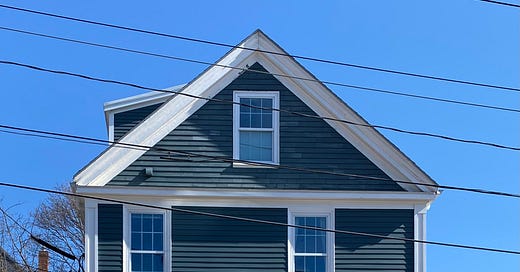The bulk of this practice focuses on reading the physical plane. That requires both attention and intention. To see what’s being communicated we have to learn the language of space. Our spaces communicate with us through symbols and metaphors.
Reading a space is a lot like analyzing literature. In the beginning, it will take you time to unpack the messages. It takes time to unravel a metaphor. The way a message is communicated can feel clunky and confusing. It reminds me of reading Shakespeare for the first time—nothing made any sense!
The fact of the matter is we are reading spaces all the time. The exterior of a space is always communicating something to us. We are all judging books by their covers and sussing out vibes all the time. We wander into various establishments because of how they speak to us from the outside. That’s what curb appeal is! It’s why we choose to patronize one shop over another and the reason we have favorite houses around our towns. A well-designed exterior draws you in deeper. Whether it’s a pleasing sight or a delicious aroma, the exterior experience invites us through the door.
So how do we begin to understand this language? How can we bring more awareness to this reflexive process? I find it easiest to begin with public spaces. An easy way to do this is to take a stroll through your town (or even just up your street!).
As you go, pay attention to which homes or establishments pique your interest. Which ones are you drawn to? What pulls you in? What intrigues you about that place? Are there homes you wish you could step inside and explore deeper? Are there any businesses you feel like you could just live in?
Call to mind your favorite shop. What is it that keeps you coming back? The inventory? The amazing service? The warmth of the space? The interior design? It could be anything!
Equally important—figure out what repels you.
Focus on what you don’t like in a space. When you find yourself thinking I don’t like that house or I don’t want to go to that restaurant, dig deeper. What is it about the house you don’t like? Is it displeasing to you architecturally or is it more energetic? What feeling does that space evoke in you? What is being communicated to you through that physical environment? What feels uncomfortable or unpleasant about it?
Consider a restaurant you don’t enjoy frequenting. What is it about the environment you dislike? For me it’s often acoustic (either too noisy or too quiet), the seating is uncomfortable, or the lighting is harsh. Perhaps it’s a weird smell, stressful parking lot, inconvenient location, or unpleasant service. There is no right or wrong here. The point is to figure out what you dislike.
Now flip them. What kinds of environments do you like? I like relaxed spaces! I want to snuggle up (comfortable seating and soft lighting) and have a long conversation (acoustically pleasing) with the people I’m with. I like to feel heard. I want to be at ease.
It may feel redundant to assess what you like and dislike. After all, the things you are drawn to and the things you are repelled by are likely opposites. Yet I find so much value in approaching the exercise from both sides. I always discover something new that I like or dislike when I do.
As you move through this process themes will begin to emerge. Notice how you feel in certain environments and find the commonalities within them. Whether you feel comfort or discomfort, pause. Take the time to understand why. Make a mental note of where you are and what’s surrounding you. Learn your tastes and preferences.
The most beneficial practices work in small quantities, enjoyed consistently over time and energetic design is no different. Repetition and consistency are key. So pay attention and see what comes through.
-MRD





